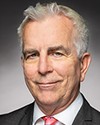We've lost over 42,000 Canadians due to unregulated toxic drugs. In the United States, it's been hundreds of thousands of Americans. We don't need more evidence that toxic street drugs produced by and profited from by organized crime are what's killing people.
Thirty states in the U.S. doubled in their number of overdoses in two years. None of them had safer supply. That's the evidence that harm reduction actually works. We know that in B.C., deaths have gone up 5%, and in Ontario it's 6.8%. That's not good enough. We need to ramp up safer supply.
In Alberta, where they scaled down harm reduction, have no safer supply or decriminalization, and focus on recovery, abstinence and criminalization, there's a skyrocketing death rate of 18%. In Saskatchewan, it's similar to Alberta at 32%.
In San Francisco, they closed their safe consumption site in 2022. Eleven months later, their death rate had gone up 25%.
Alberta has made safer supply prescribing illegal. They will fine doctors who provide life-saving care $10,000 a day for every patient to whom these doctors provide safe supply. Alberta is reducing support for and closing safe consumption sites, against all scientific evidence. Since Alberta made these ideological decisions, overdose deaths have surged 18%.
What will this government do to limit the harms of Alberta's ideology-driven policies? What will this government do to support the people at higher risk of death due to Alberta's policies?





